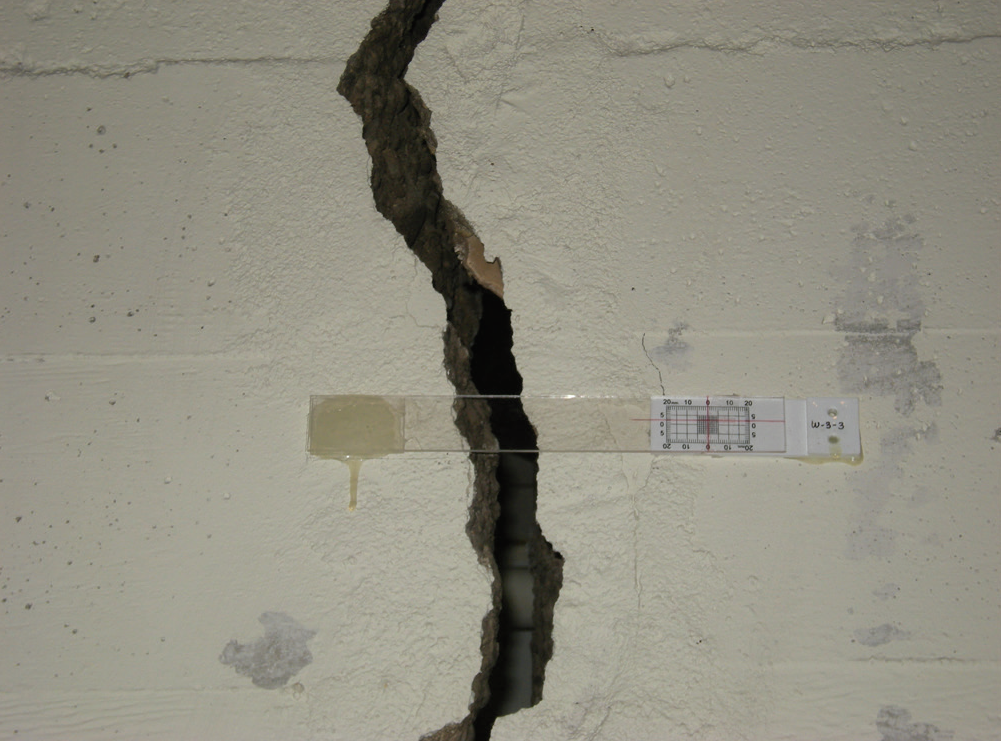Case 2
- Introduction
- Causes of Defects
- Good Practices
- Standards
- Maintenance and Diagnostics
- Remedial
- Similar Cases
- References

Introduction
Type of Building: Public
This is an example of a structural crack due mainly to movements, rather than a material issue alone. As concrete is weak in tensile/flexural strength, when a building is subjected to loads that exceed its designed capacity, due to e.g. an increase in live/dead loads, structural cracks may occur. With lack of provision of movement joints, cracks, in this case, may be resulted due to differential structural movement or differential settlement of foundation caused by lateral movement together. Uneven settlement of the soil and loading can result in differential settlement exceeding the tensile/flexural stress of the reinforced concrete causing the crack. Such differential settlement if continues, will result in the formation of a live crack and must be treated seriously. Such cracks appear more apparent on walls near the sinking foundation. The design and construction phases must pay special attention to strengthen the control of the uneven settlement of the foundation.
Concrete is fireproof but not waterproof. It is heterogeneously composed mainly of coarse aggregate (stone), fine aggregate (sand) and hydrated cement as the binder. Strong in compressive but weak in tensile strength, reinforcing steel rods and/or prestressing tendons are included in the tensile zone; hence, the name “reinforced” and/or “prestressed” concrete. Concrete may crack in different ways – click “Concrete Cracking” for more details.